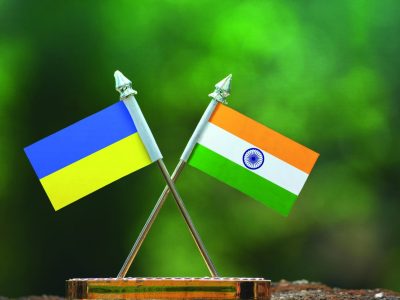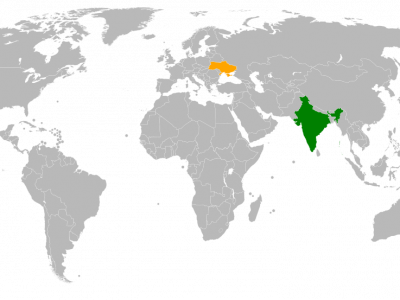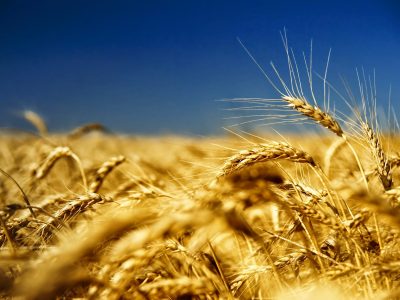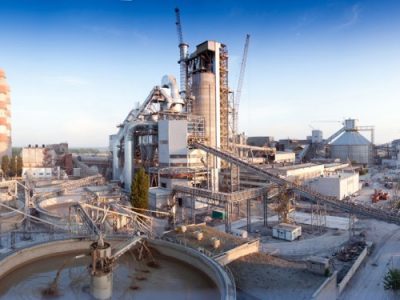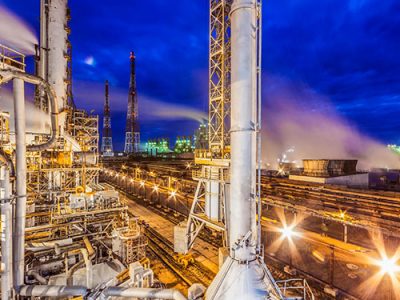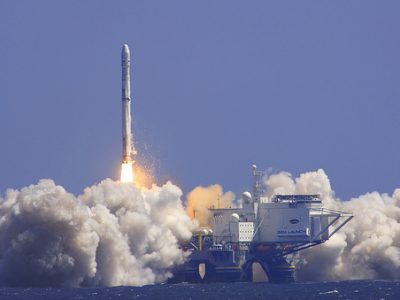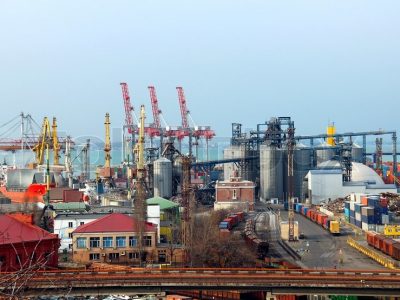Ukraine as a strategic business partner
| National Flag | Official language | Independence | Area | Population | Capital | Currency | Life expectancy | Actual Time |
| Ukrainian | August, 24th, 1991 | 603550 km² | 44,831,159 (2017) | Kyiv | Ukrainian Hryvnya (UAH) | 64 years (men), 75 years (women) |
Ukraine was recognized by the Republic of India as a sovereign independent state on December 26, 1991. On January 17, 1992 Protocol on the Establishment of the Diplomatic Relations between Ukraine and the Republic of India was signed.
In May 1992, Embassy of the Republic of India in Kyiv was established. In February, 1993 Embassy of Ukraine in New Delhi was launched.
Ukraine is member to numerous world and regional international bodies, including United Nations (UN), Organization for Security and Co-operation in Europe (OSCE), the Council of Europe, EU Energy Community, the GUAM, the Commonwealth of Independent States (CIS), the World Trade Organization (WTO), the International Monetary Fund (IMF) and the International Bank for Reconstruction and Development (IBRD, World Bank). It is also affiliated with the European Bank for Reconstruction and Development (EBRD).
On 27 June 2014, the European Union – Ukraine Association Agreement was signed. The key parts focus on support to core reforms, economic recovery and growth, and governance and sector cooperation in areas such as energy, transport and environment protection, industrial cooperation, social development and protection, equal rights, consumer protection, education, youth, and cultural cooperation. Also it includes a Deep and Comprehensive Free Trade Area with EU.
Trade and economic relations of Ukraine and the Republic of India
Cooperation between Ukraine and the Republic of India in the economic sphere is based on the following main documents: Agreement on Trade and Economic Cooperation (27.03.1992); Convention for Avoidance of Double Taxation and Prevention of Fiscal Evasion with respect to Taxes on Income and on Capital (04.07.1999) etc.
Dynamic of the Development of Trade between Ukraine and India
(million USD) [Source: Government of Ukraine]

The major import commodity items of India to Ukraine: pharmaceutical products; organic chemicals; plastics and polymers; ferrous metals and articles thereof; tobacco and manufactured tobacco substitutes.
The major export commodity items of Ukraine to India: fats and oils of vegetable origin; agricultural products; ferrous metallurgy; nuclear reactors, boilers and machinery; fertilizers; inorganic chemistry.
Prospective directions of bilateral cooperation in the economic sphere are considered in the framework of the Ukraine-India Intergovernmental Commission on Trade, Economic, Scientific, Technical, Industrial and Cultural Cooperation, that was established under the intergovernmental agreement dated of 19.04.1994. It’s recent, 6th Session was held on February 5-6, 2018 in Kyiv.
Extraordinary and Plenipotentiary Ambassador of India to Ukraine – Mr. Manoj Kumar Bharti said:
“India has seen Ukraine as a very prominent country in the European context, because is the largest in terms of area, has a very strong educational base, it has a big number of scientific and research establishments, almost the entire population is highly educated – all these make Ukraine very attractive country for India. Ukraine also has highly developed agricultural sector, you are the food basket of Europe to large extent. Still, our both countries have missed out on certain opportunities. India could have benefited more from Ukraine, because of the strong Ukraine’s scientific potential, I mean specific sectors like shipbuilding, like aviation – all these could have been better utilized by the corresponding establishments of India. Today India is recognizing the importance of Ukraine in niche areas, for example, our country is the largest destination of sunflower oil from Ukraine – 65% of all Ukrainian export to India. Also, not many people realize that India is the sixth or seventh largest trade partner for Ukraine”.
Fast facts
[Source: World Bank Overview on Ukraine Economy]
Ukraine contains around 5% of the world’s mineral resources
Ukraine has a large supply of many valuable mineral and raw material resources. As for stocks iron, manganese, titanium and uranium ore Ukraine is ranked first among European countries and with the mercury ore reserves – secondly (after Spain).
Ukraine has some of the world’s largest manganese deposits. Ukraine’s share in global manganese production is 32 %.
Ukraine has Europe’s third-largest shale gas reserves at 1.2 trillion cubic meters (tcm).
Ukraine has large reserves of such raw materials as potassium and magnesium salts, table salt, native zeolites, etc. Ukraine has large and unique deposits of table salt. As to its chemical purity, this salt is the best in the World.
Ukraine has deposits of ores of rare metals – zirconium, hafnium, niobium, lithium, beryllium, scandium, tantalum, yttrium, lanthanum, molybdenum, strontium. These metals and their alloys are used in nuclear engineering, electrical engineering, electronics, aero-space engineering.
Ukraine is known as the “breadbasket of Europe”
Ukraine has 1/4 of all stocks of black soil (or chornozem) on the planet. Black soil with proper handling gives the greatest number of crops and considers as the best land for agriculture.
Ukraine’s farms produce large amounts of potatoes and grains such as wheat, corn (maize), and barley. Ukraine is one of the world’s leading producers of sugar beets.
Being a large grain producer, Ukraine is one of the six world largest exporters, supplying to 80 countries worldwide. The country is also the biggest exporter of sunflower oil and has substantial potential in growing and exporting rapeseed.
Ukraine is the 3rd largest exporter of honey in the world with the total amount around 70 000 tons.
Industry
Machine-building is the largest Ukrainian industrial sector. It accounts for over one-third of the employed and about a quarter of the total cost of industrial main assets.
Among the examples are development of the rocket and space industry (Zenit 3SL, Cyclone), aircraft building (AN-70, AN-140, “Mriya”), production of advanced tankers and large-tonnage vessels, fabrication of turbines for nuclear power plants, highly-efficient gas-pumping installations, equipment for high-voltage power transmission lines, mining equipment, diesel locomotives, tractors etc.
The Ukrainian shipbuilding industry is a complex of colleges, universities and research centers; experienced design bureaus; 9 shipbuilding yards with different capacities and specialisation; and a number of ship repair yards.
The multi-branch chemical sector of Ukraine includes chemical, petrochemical and chemical-pharmaceutical sub-sectors with over 1,600 enterprises and structural units.
Ukraine’s iron and steel industries are very important due to the fact that the machine building and metal-working industries depend on the production of ferrous and non-ferrous metals, and that metal is the main source of engineering materials and an important export article.
The metallurgy sector includes 14 integrated steel making plants, 7 pipe plants, 10 plants producing metallic articles, 16 merchant-coke plants, 17 refractory production plants, 3 ferroalloy plants, 20 non-ferrous metallurgical works, 35 factories reprocessing ferrous and non-ferrous scrap metal, and other enterprises.
Food industry is traditionally the major supplier of basic foods, such as sugar, salt, oil, alcohol, confectionery, etc. Ukrainian food industry is the leader of the agro-industrial complex
The energy sector is of key importance for the national economic development, as both production and municipal facilities require electric power for their operation.
Ukraine ranks seventh in the world and fifth in Europe in terms of the number of nuclear reactors operated, total capacity and electricity produced. It has 15 reactors generating about half of its electricity.
Still have questions? Contact us


